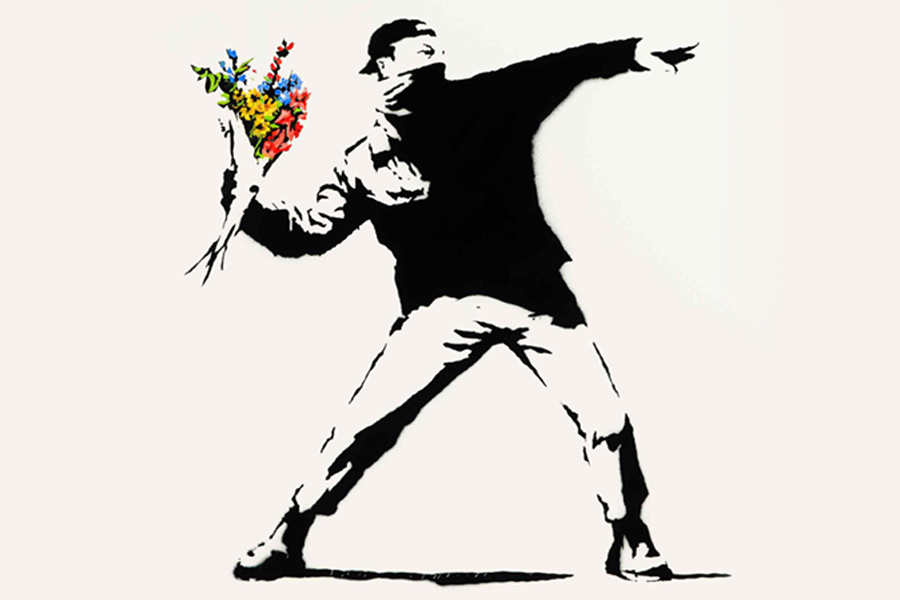

Yieldstreet has launched a new alternative investment fund that offers exposure to a handful of modern artists — including the anonymous British graffiti artist Banksy, who famously shredded a painting after it sold at auction for $1.4 million — but this time, none of the artworks will end up in pieces.
This week, the digital alts provider launched its Art Equity Fund III fund, which focuses on globally celebrated artists who lead the market in terms of liquidity, price momentum, trading volume and popular interest. Other artists in the fund include the well-known Japanese contemporary artist Takashi Murakami, as well as up-and-coming painters like the Ghanaian artist Amoako Boafo and New Jersey-born Mickalene Thomas.
“Banksy and Murakami would probably be the most well-known names, but the market for these artists is exceedingly strong and we're sort of at the beginning of what we anticipate to be explosive growth.” said Rebecca Fine, head of art financing at Yieldstreet.
Yieldstreet launched its first art equity fund in November, followed quickly by another fund in January, which focused on Black and female visual artists working in New York — two groups that have long been under-represented — and whose works are highly coveted by collectors, according to the company.
The latest fund decided to home in on contemporary artists of the 21st century.
“Banksy has been under-appreciated until very recently,” Fine said, referring to the 2018 piece “Girl with Balloon” which was famously destroyed after its sale. The artwork, which was retitled "Love is in the Bin" after the shredding, was then resold last year for a record $25.4 million, a sale that received considerably less media attention.
“We’re looking at much broader time horizons than just what happened in 2018,” she said. “The 'Girl with Balloon' made a lot of noise, and that’s when the art world started paying attention. But it has implications for all of his works.”

Fintech companies like Yieldstreet are now using automation to combine numerous investors into a single fund, bringing down the investment minimums and allowing entry for more mass-affluent investors. The Art Equity Fund III is only open to accredited investors and the minimum starts at $15,000.
Research from PricewaterhouseCoopers suggests alternatives will grow significantly in the coming years; it predicts assets will double between 2017 and 2025. Real assets, which include infrastructure and real estate, are expected to be the fastest-growing segment. A major factor in alts’ popularity has been the declining number of publicly traded companies, which fell by half between 1997 and 2017, forcing investors to look for other investing options.
Yieldstreet’s latest fund doesn't disclose the exact artworks it's purchased, but is currently targeting annualized returns of 16% to 20% and expects to hold the works for at least the next five years, according to the company. Fine said the company prefers its status as an anonymous buyer.
“We are attempting whenever possible to loan the artwork to museums for important exhibitions,” she said. “We know that enhances the future value of the artworks, and also enables us to share them with the broader public.”

The 25-year industry veteran previously in charge of the Wall Street bank's advisor recruitment efforts is now fulfilling a similar role at a rival firm.

Former Northwestern Mutual advisors join firm for independence.

Executives from LPL Financial, Cresset Partners hired for key roles.

Geopolitical tension has been managed well by the markets.

December cut is still a possiblity.
Streamline your outreach with Aidentified's AI-driven solutions
This season’s market volatility: Positioning for rate relief, income growth and the AI rebound
